Are you still with me? Still tracking with these thoughts on eliminating poverty? Good.
Now, I’ll share with you some data — data that show the Millennium Development Goals are on target.
We used to say that 40,000 children under age 5 die every day of hunger or preventable diseases. Then about 6 to 7 years ago this number was 30,000. Today, 24,000 children under 5 die every day of hunger or preventable diseases.
These statistics show that in 20 years the number of children who die every day of hunger or preventable diseases has been cut in half. Yet, the birth rate is actually going up. The population is increasing.
The blue line represents the years 1800 to 2000. In 1800, 85 percent of the world’s population lived in extreme poverty. Today it’s around 22 percent.
Between 1950 and 2000 there was a dramatic decline from 55 percent to 22 percent.
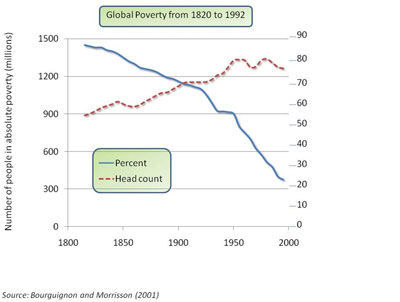
From 1981 to 2001 the population living in extreme poverty in China dropped from 60 percent to about 10 percent. And the same dramatic decline can be seen in India; the percentage of the population living in extreme poverty has dropped from over 60 percent to about 34 percent.
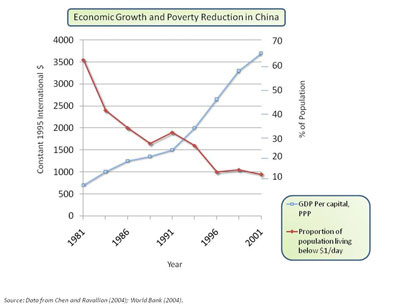
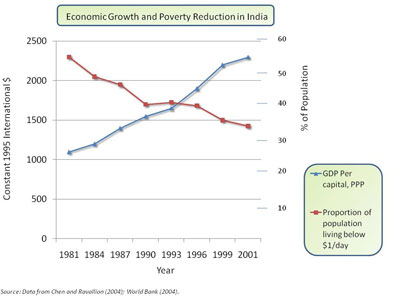
Between 1990 and 2005 the death rate for children under 5 in the Middle East and North Africa was cut in half. It is on target for the fourth Millennium Development Goal, to reduce by two thirds the mortality of children under 5.
And the same is true for Central America and the Caribbean. The death rate of children has been cut in half in the past 15 years.
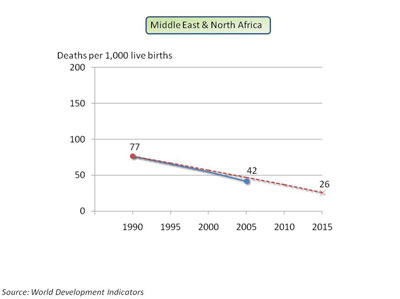
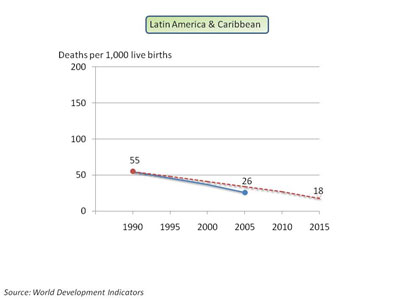
Scott proceeded to show graphs from South Asia, Europe, Central Asia and East Asia and the Pacific. All showing that the death rate of children under 5 has drastically decreased.
In fact, the only area where we are behind for decreasing the mortality rate for children under 5 is sub-Saharan Africa, and yet there is still a decline.
All over the world sanitation and water quality have been improving.
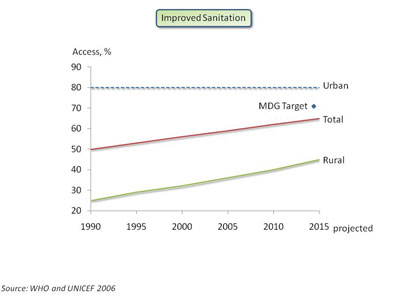
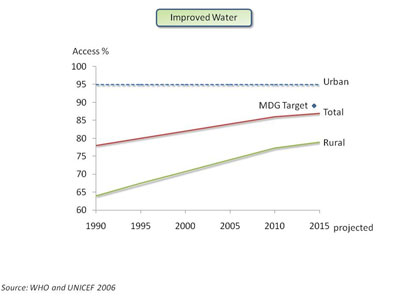
As this graph represents, the spread of HIV in Africa has been curbed; it is not increasing as it had in years past; in fact, it seems to be flat-lining.
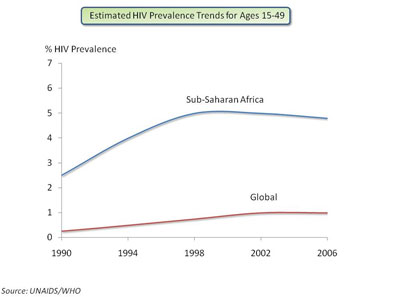
All these statistics strongly support what Jeffery Sachs (a world-class economist with a Ph.D. in economics from Harvard) has said,
“Ending extreme poverty* is a practical, achievable objective and is an objective that can be completed by our generation.”
He is making this statement through the lens of an economist, as someone looking at the numbers. He is saying this from a secular viewpoint. How much more true his statement is when adopted by us whose belief is rooted in the Creator of the universe. The One who stated, “There shall be no poor among you.”
To bring us to a close, Scott brought us back to Judas’ life. A man who walked with Jesus, who witnessed the miracles and the love of the Lord, yet he betrayed Jesus because of his greed and love for money. He sold Jesus for about half the value of the perfume Mary anointed Jesus with.
Scott states,
“The wealthy church today, the American church, has been entrusted with a purse of the Kingdom. The majority of Christ’s followers live in the developing world. What do they think of us as treasurers? Are they assuming that we would put the treasuries of the Kingdom to celebrating God’s goodness or caring for the poor? How are we doing?”
He then shared a fact that is, to say the least, haunting.
The annual income of Christian American churchgoers is $5.2 trillion. The amount of money needed to end global poverty is about $74 billion a year.
Did you crunch the numbers?
Basically, 1 percent of our annual income a year is what is needed to end extreme poverty.
Can you imagine? It could be said of our generation, “And there were no needy persons among them.”
To add a little perspective, Americans spend ten times more on entertainment ($705 billion) than what is needed to end poverty.
Is it just a matter of priorities?
As Scott ended he pointed out that there are only a few important questions:
- What does God want? Do we have any doubt about that? Does he want children suffering?
- Are we willing to join Him in His work?
This is a path that has already been paved by Christ-followers who have gone before us. We have a model to follow. We are not alone. We are fighting with the Lord.
*Extreme poverty, as defined by UNICEF, is living on less than $1 a day. According to this definition, one in six people around the world lives in extreme poverty.
Surely, that was quite a bit to take in. And now I am eager to know, was there that shining light of revelation for you? What is the state of your heart?







12 Comments |Add a comment
POINT MADE, AND RECEIVED. Even if we can’t COMPLETELY eliminate ALL poverty, a concerted effort CAN make the very most horrific DEPTHS of poverty all but disappear. Especially if we aren’t just throwing money at a problem, but are working with needy communities to strengthen their own abilities, and actively seeking the aid of the great God of the universe to help us!
Where did Scott get the American churchgoer income statistic?
Great stuff. Very encouraging to hear the statistical evidence of extreme poverty on the decline. It is wonderful to hear such news!
I would be hesitant to agree that $74 billion a year would end poverty. There are many more factors than that involved. Yet, it is great to give $$$ to people in need.
“We used to say that 40,000 children under age 5 die every day of hunger or preventable diseases. Then about 6 to 7 years ago this number was 30,000. Today, 24,000 children under 5 die every day of hunger or preventable diseases.”
—I’m so glad that those numbers are going down. They are still high but they are lessening. Praise God! 🙂 —
Yeah, I don’t mean to beleaguer the point but we, as fallen man, do not have the ability to end poverty, any more than we could end sin. It’s almost a little narcissistic to think that that’s our calling — although I know you don’t have that in your heart, so don’t read me wrong. 🙂
Graphs are tricky things. We could cut the number of hungry in half year after year after year… and never feed everyone, because we’d always have “halfway” to go.
We are called to *fight* poverty… no more. There is no end conclusion that we are called to attain… other than to be more Christ-like to our most pitiful extent possible. No mission accomplished awaits us here on Earth… only “well done good and faithful servant” in the kingdom to come.
This isn’t a parsing of words, I don’t think. This is a Biblical approach to man and to serving Christ. The secular humanists are the ones who think man can end their own suffering. We know better. 😉
The posts on this blog have me rethinking my life and causing me to contemplate everything I do these days….
Whether it be going to see a movie (even at the two dollar movie theatre that is two days worth of income for a family somewhere!) or eating a can of soup that costs $1.89…………
If only EVERYONE would sit down and read these posts or just listen when someone tells them the positive impact that they could have on another family……….
The graphs are excellent. Thank you. Perhaps I can change some hearts by using them… :o)
I agree, when you seen the numbers it is quite simple…very obvious. I am thankful Compassion allows and helps me end poverty for a few people!
“Ending extreme poverty* is a practical, achievable objective and is an objective that can be completed by our generation.”..”
Of course poverty isn’t natural. We weren’t born to live in poverty. Poverty is man-made and can be eliminated by man.
Thanks very much for sharing. these are great posts!
This is outstanding. I will definitely share some of these facts when I speak in churches. It also has hit home with me personally. Thank you so much for the research and for sharing it with us…
“… for I was hungry and you gave Me food; I was thirsty and you gave Me drink; I was a stranger and you took Me in; I was naked and you clothed Me; I was sick and you visited Me; I was in prison and you came to Me… Assuredly, I say to you, inasmuch as you did it to one of the least of these My brethren, you did it to Me.” Matthew 35 – Oh my, this is, according to God’s Word of Truth, how the shepherd will divide his sheep from the goats… this is how we will be judged when Jesus Christ comes to judge the nations.